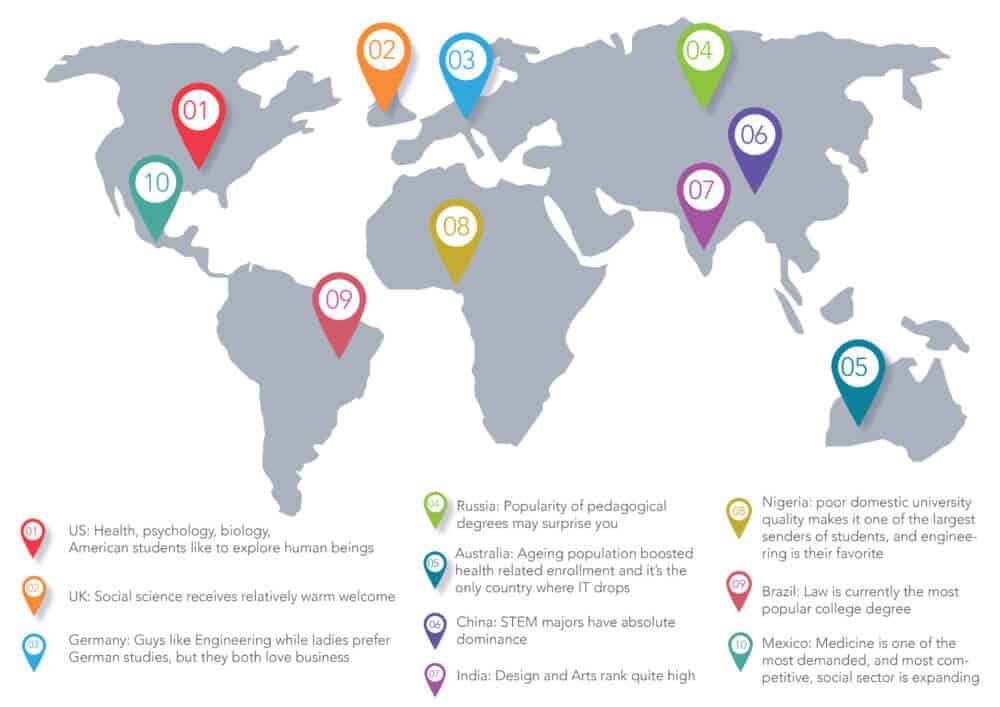Youth Time magazine has conducted a research project to identify the most popular college majors in 10 countries around the globe, and a few interesting patterns have been brought to light. For example, business and management peaks in almost all the countries surveyed, the exception being Russia. The IT sector’s popularity, surprisingly, is low only in Australia. Health and Engineering degrees are constantly as popular, as they were 10 years ago worldwide, especially in the most developed countries such as the US and Germany. While 7 out of 10 top-listed majors in China are STEM, half of the young Indians surveyed turn to the arts and Law, which are also in demand in Brazil. Read our research results to find out why.
US: Health, Psychology, Biology, American students like to explore human beings
Business and Management are the most popular subjects in the U.S. (289 384 degrees).
Health-related programs such as Nursing are next in line (141 632 degrees). Psychology and Biological and Biomedical Sciences run almost neck and neck (127,066 degrees and 120,375 degrees, respectively).
The 5thplace belongs to Engineering, with 117 553 degrees awarded.
Social science majors such as Education (102 219) follow up, and the difference between Communications (98 949) and Finance and Accounting (98 663) is rather small.
A little bit surprisingly, Anthropology and Sociology (57 630) beat Computer Science (55 843) and have moved into the top 10.
The trends in prevailing college majors in the US connect directly to the average starting salary.
Graduates with a degree in Business Administration receive $41,245 as a starting salary with an average mid-career salary of $70,694.00, higher than the average level of compensation of graduates in any other major, which is the biggest motivation that drives not only American students but most youngsters around the world.
The traditional high demand for medical services has helped to spur the popularity of medical and health-related programs.
According to market research, doctors and nurses almost never face the unemployment issue: even when economic crises take place, medical workers usually are able to keep their jobs.
Notably, in the U.S., a general psychology degree will open doors for students to find jobs in social work, marketing and human resources, similar to Education and Communications.
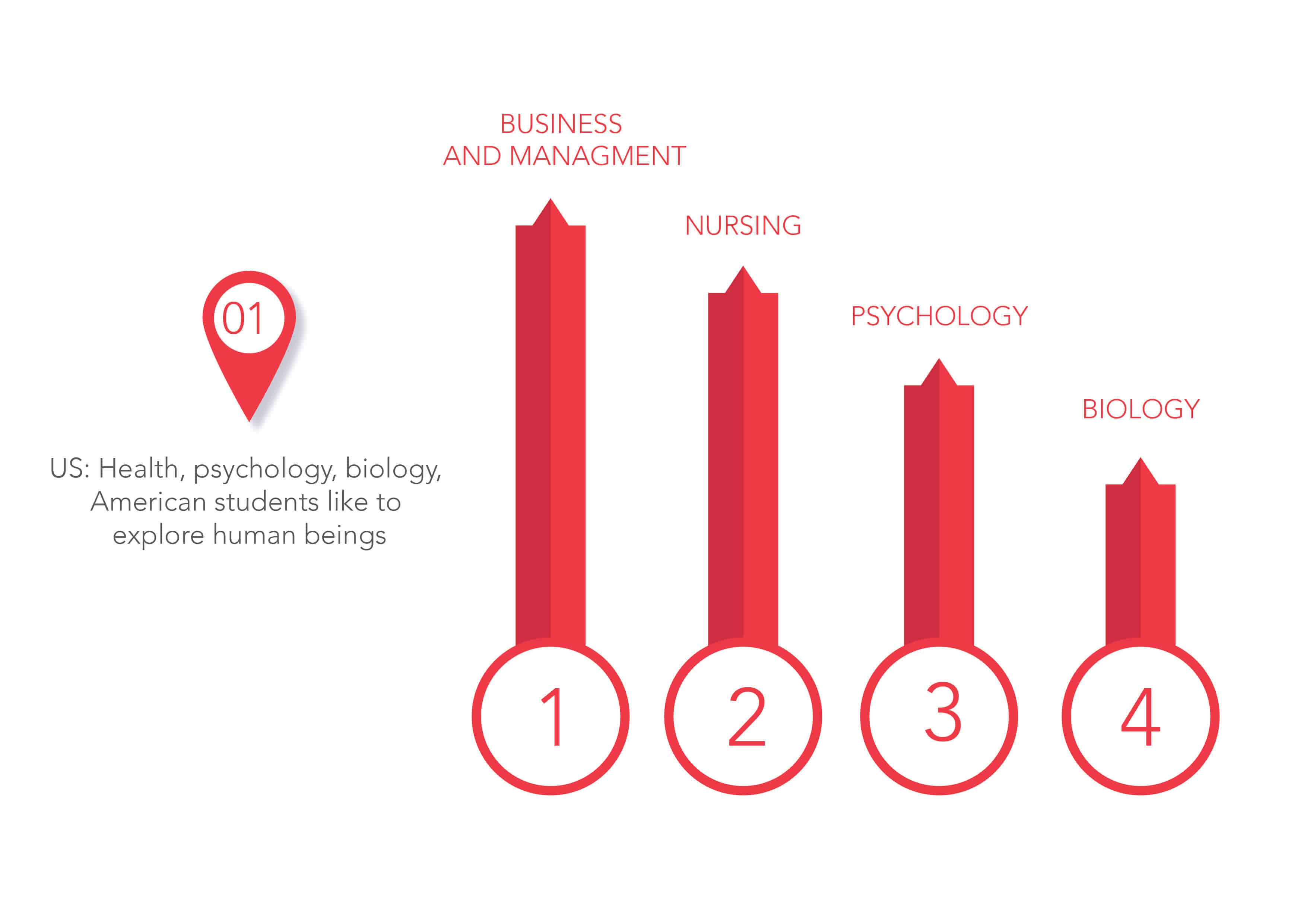
The UK: Social science receives a relatively warm response
Respecting the UK, course data from the British Higher Education Statistics Agency illustrate that Business & Administrative studies are the most popular subjects (342,970).
Subjects allied to Medicine and Biological Sciences are the second and third (288,065 and 233,970 respectively).
Social Studies receive a warm welcome among young people as well (229,360). The 5th, 6thand 7thare respectively Creative Arts & Design (178,415), Engineering & Technology (164,975) and Education (145,445), and the differences among them are similar.
The other two subjects that have over 100 thousand students are Computer Science (107,250) and Languages (103,545). Physical Science (95,720) is also close to this number.
Social Studies are more popular in the UK than in America.
For example, UK universities are among the oldest universities that offer law courses.
Therefore, reflecting this long and rich tradition, UK law degrees have become very popular (and indeed highly competitive) for its students.
Another large absolute increase can be found in Creative Arts & Design degrees.
The Higher Education Statistics Agency attributes this popularity to the increase in part-time students, among which there was a 19% increase in students studying Creative Arts & Design between 2015/16 and 2016/17.
A large part of this increase was due to an alternative provider merging with the University of the Creative Arts, which led to a large increase in their part-time first-degree student numbers and has pushed this major to the 5thmost popular in the UK.
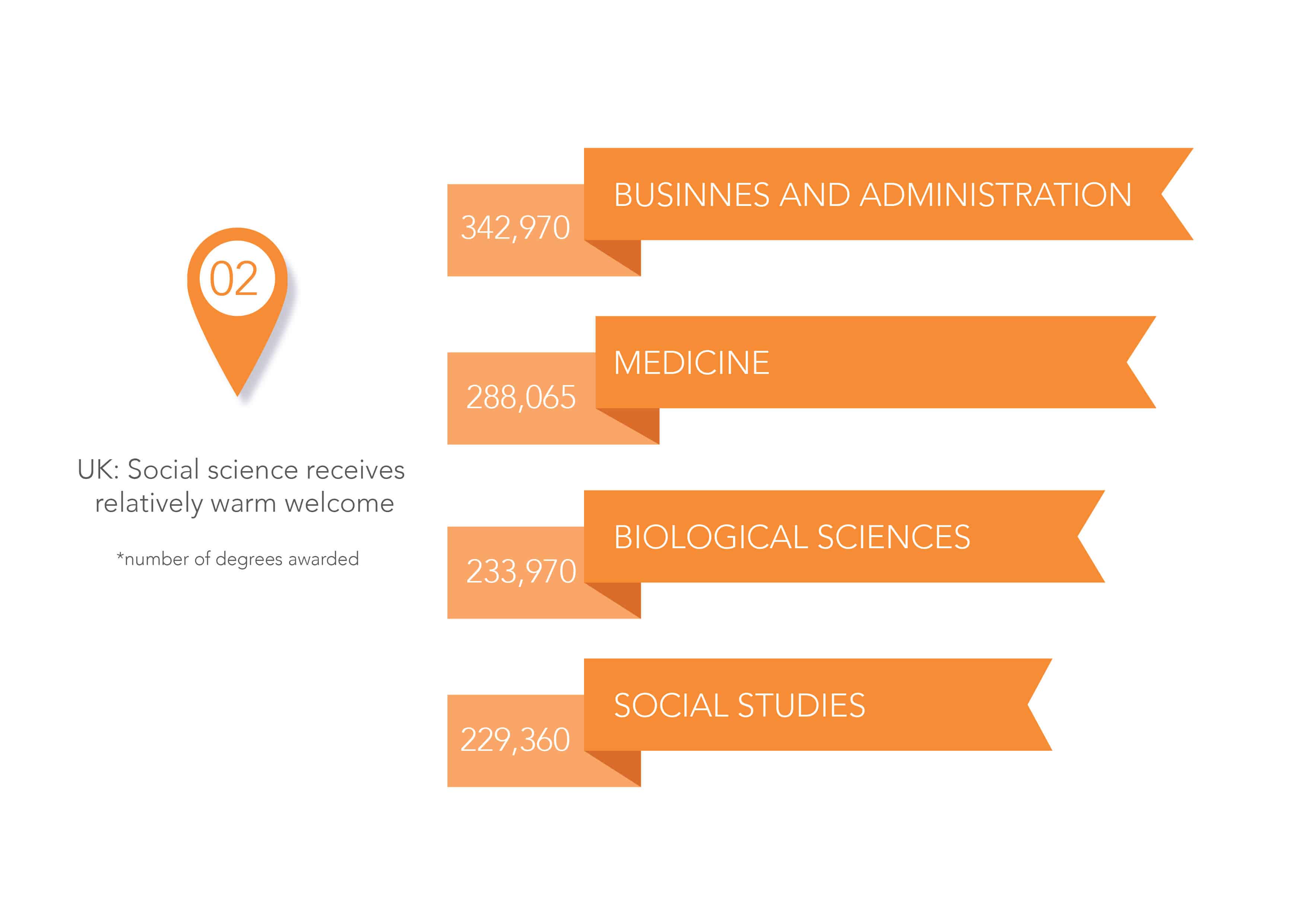
Germany: Guys like Engineering while ladies prefer German Studies, but they both love Business
The independent survey from StudyCheck shows differences in the most popular courses for men and women. Business Administration has for years held the top spot in the ranking of the most popular programs, both for men and women.
When it comes to the 2ndplace, German Studies is favored by women, and 75% of German Studies students are female.
Meanwhile, German men choose Mechanical Engineering as their second favorite, and this is just the beginning of their interest in engineering.
Medicine is one of the most popular subjects in Germany and the 3rdmost popular among German ladies, while Computer Science is still listed by men as their 3rdchoice. 4thand 5thplaced popular majors among German guys are both in the engineering area (Industrial Engineering and Electrical Engineering), while German ladies turn to Law and Pedagogy.
Graduates who earn engineering degrees have excellent job prospects. New engineering graduates will earn relatively high salaries of € 2,800 to € 3,800 a month in Germany. Besides, they have a wide range of activities open to them, from plant engineering and mechanical engineering to aerospace engineering and vehicle construction.
As a graduate of a mechanical engineering degree program, a young job-seeker will be a sought-after expert wherever engineering is needed.
German Studies is also a popular subject for student teachers.
According to the HIS study, every second German Studies student aspires to become a teacher.
Teacher training usually promises a quick career start and good salary prospects. In 2010, a total of 60% of German Studies graduates found a job within one year of completing their degree.
The average starting salary was € 2,100 gross per month.
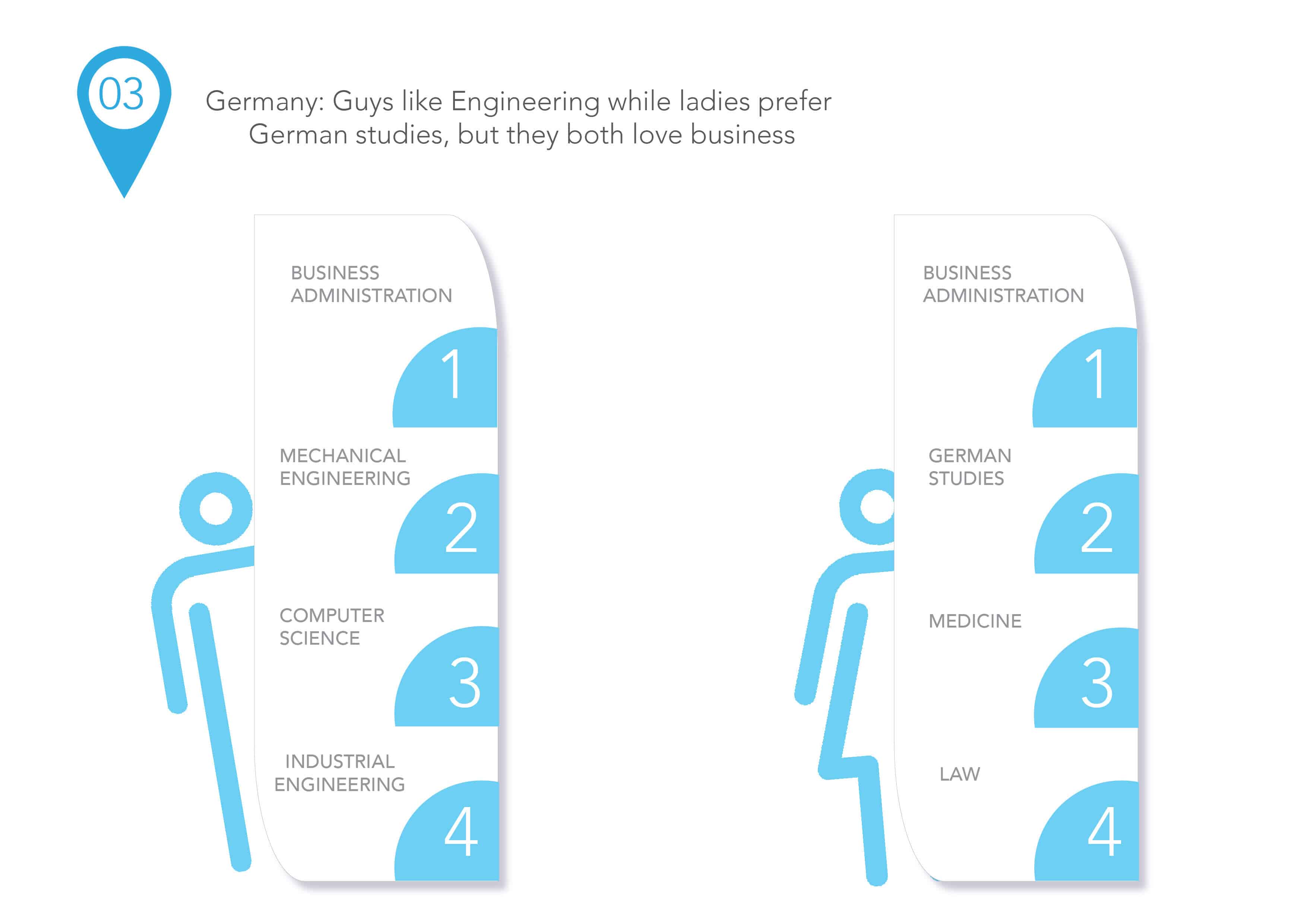
Russia: The popularity of pedagogical degrees may surprise you
Pedagogical faculties, IT specialties, and Medicine are the most popular majors for Russian university entrants in 2019, reports Russian Ministry of Education and Science.
According to Irina Abankina, the Director of the Institute for the Development of Education of the Higher School of Economics, the past few years have brought a significantly increased number of state-funded places in universities for majors related computer sciences, etc.
More than that, students can pass a unified state examination in informatics and mathematics and can be accepted into IT majors without any additional exams at university.
It may surprise many readers that pedagogical degrees generate so much enthusiasm.
One possible reason, according to Alexey Semenov (Academician of RAS and RAO), is that in the past few years the career of teacher has became more prestigious in Russia.
Reforms in education have brought higher salaries for teachers and have helped to attract young, highly qualified professionals.
Irina Abankina explains that with the noticeable growing popularity of urban development and digital related programs, many Russian universities today combine their pedagogical programs with these emerging majors to make a new, combined major.
That may also explain the surprising popularity of pedagogical degrees in Russia.
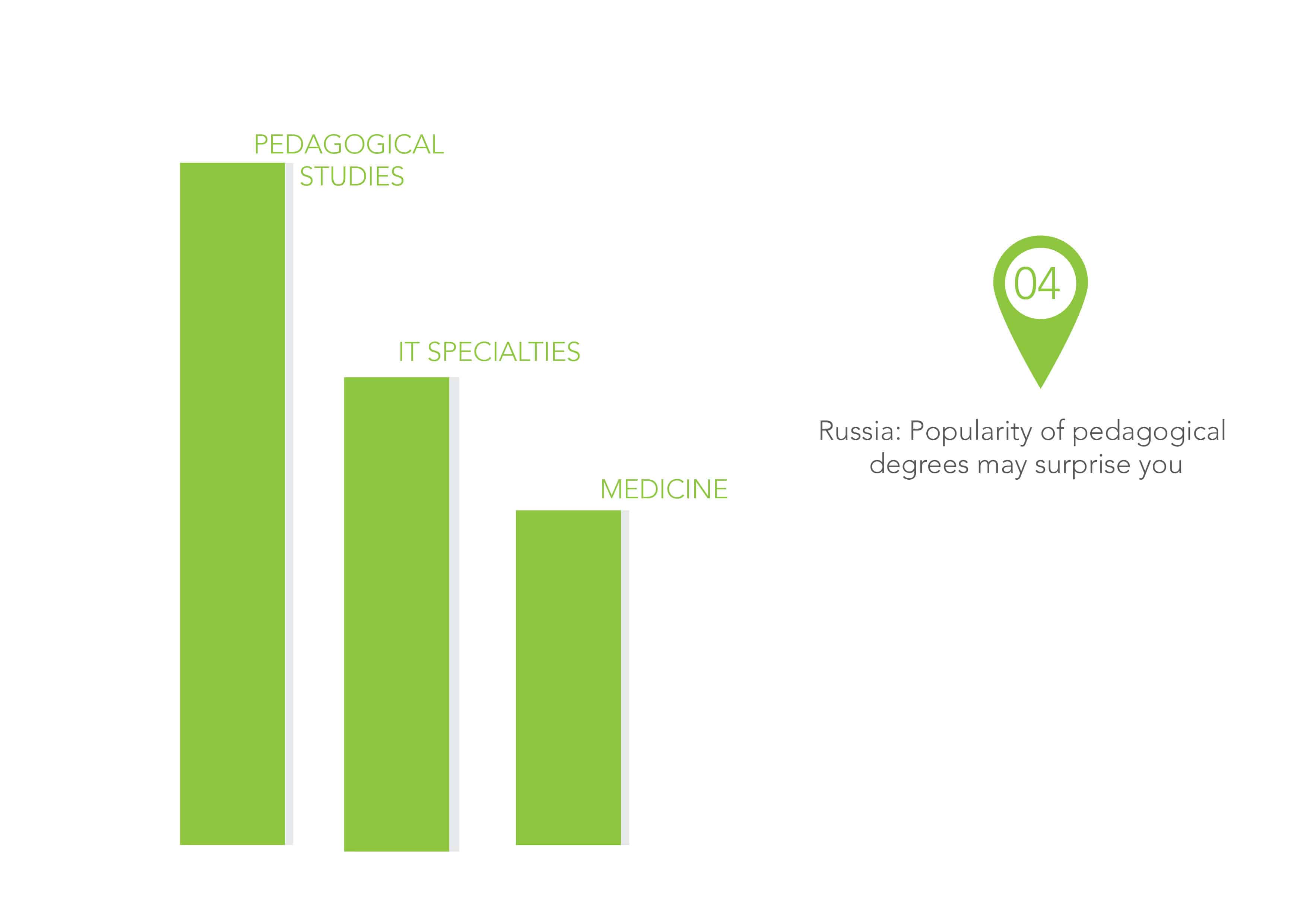
Australia: An ageing population has boosted health-related enrollment, and Australia is the only country where IT has dropped
Privately-held Good Education Group’s statistics show that majors in Society and Culture boast the highest enrollments in Australia (66,884).
The popularity of Health majors has increased by 159.0%, with 52,134 choosing to study in this area, making it more than twice as popular as 16 years ago and holding second place nationally.
Meanwhile, Care for the Aged and Children’s Services are two of the fastest growing sub-categories in Australia for the years from 2011 to 2016, which helps the Society and Culture sector to arrive at an over-all peak.
It reveals that Australia’s young people are concerned about social sectors and human factors.
The third to tenth most popular majors are Management and Commerce, Natural and Physical Sciences, Education, Creative Arts, Engineering, IT, Architecture and Building and Agriculture, Environmental and Related studies.
Mr. Chalke, principal at The Strategy Planning Group, has further pointed out that with an ageing population, increasing life expectancy, and an improving healthcare system, the nursing profession would also benefit from its inability to be fully automated.
This also partly explains the drop in IT majors, in fact Australia is the only country in our survey where the Information Technology field of study has dropped in recent years.
It seems to be because, “A lot of IT skill sets are being disseminated into other fields of study.
You might learn IT skills in Society and Culture or in Health or in Engineering, whereas previously they were specific (to IT courses)”.
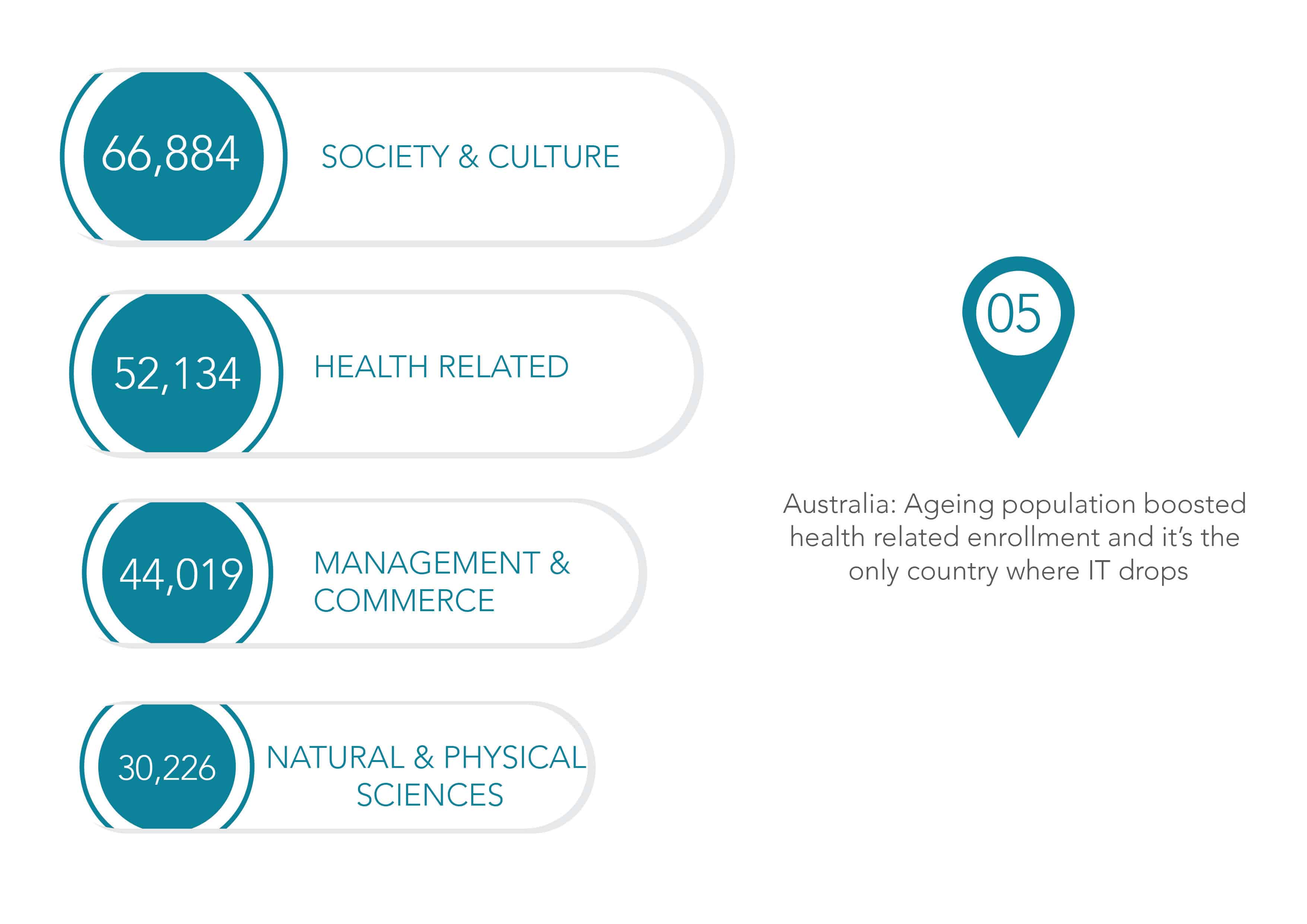
China: 7 out of the Top 10 are STEM majors, showing absolute dominance
According to China University Alumni Association, among those who score well enough in China’s highly competitive exam system to get into university, 19.39% choose to study Economics and 19.06% select Business Management, which means business & management related majors account for almost half of the popular majors.
The third most popular major in China is Informatics Engineering (6.87%) followed tightly by Law (6.53%). From No. 5 to No. 10, the most popular majors are almost all STEM (Science, Technology, Engineering and Mathematics) majors such as Biological Sciences (5.93%), IT and Computer Sciences (5.72%), Architecture (3.84%), Physics (3.37%) and Automation Engineering (3.23%).
It’s not until No. 11 that some social science majors such as Chinese language and literature, foreign language studies and journalism appear.
Chinese higher education emphasizes STEM education due to historical reasons.
When the Chinese started their reform and open policy in the 1980s, the country urgently needed scientific professionals for industrial development, and the Chinese preference for STEM is rooted in that period.
“Master mathematics, physics and chemistry, you can find a position all over the country” was one of the most famous national slogans.
Mathematics is a compulsory subject for all students, and apart from that, high school students have to choose from social science (history, politics and geography) or natural science (physics, chemistry and biology) beginning in the second year in high school.
And 80% of students will choose natural science while only 20% will choose social science or arts and sports.
This has a large impact on their future choices at universities.
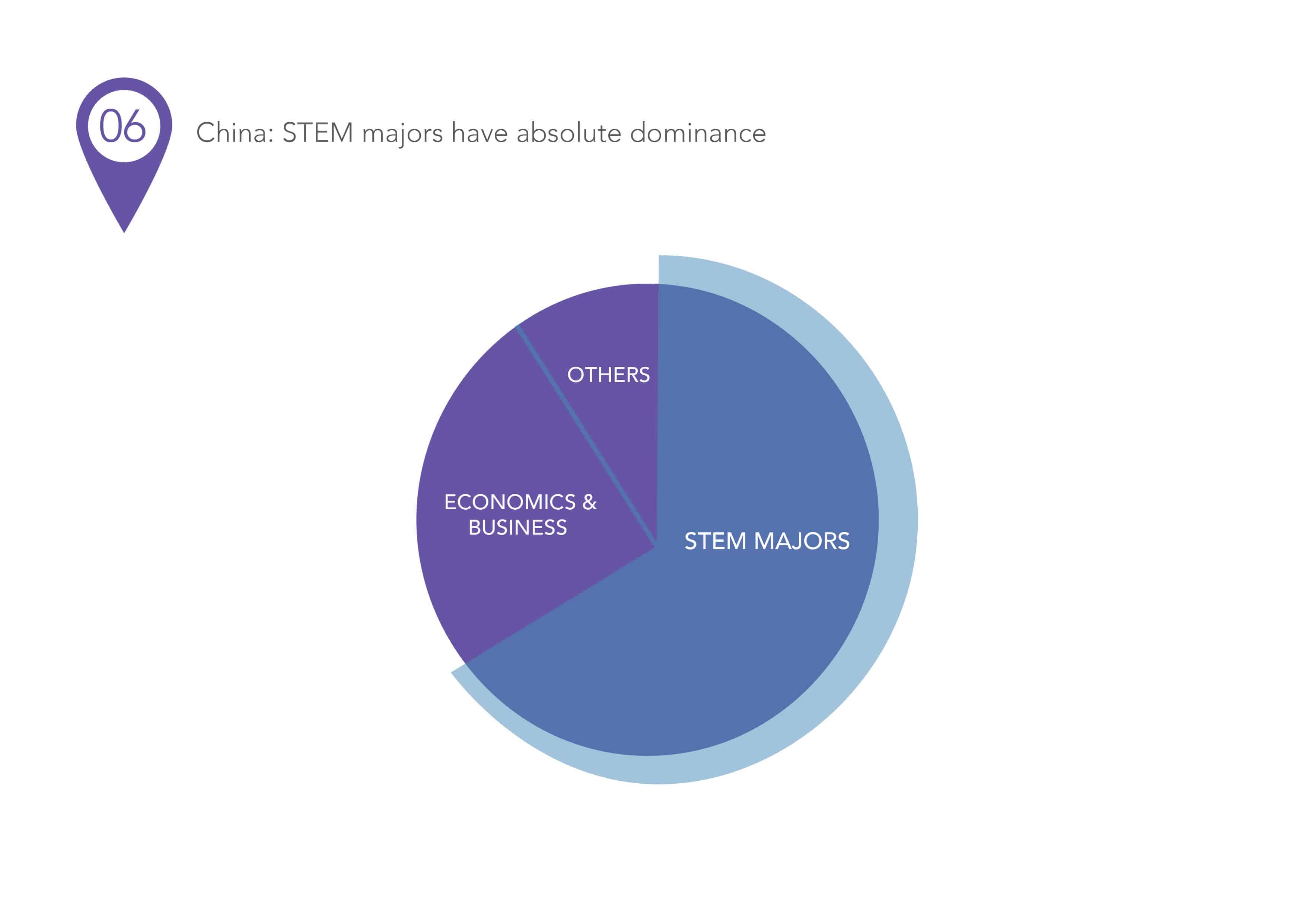
India: Design and Arts rank quite high
Without any surprises, Management, Engineering and Computer Application are the Top 3 in India.
However, things get interesting when it comes to the fourth place: Design-related majors including fashion design, interior design and Web/graphic design are quite popular.
Mass Communication and Hospitality-related majors are also emerging because the entertainment industry in India is developing rapidly, while there is a huge chance of getting jobs after hospitality courses with large hotel chains to take advantage of the growing tourism business in India.
Apart from that, the Indian educational sector is seeing a rise in the popularity of vocational courses among students who are seeking skill-training and job-oriented courses.
Design, Marketing and Advertising, and Hospitality are among the most selected vocational courses.
Through these courses, students get the chance to explore new opportunities and master the skills required for specific jobs.
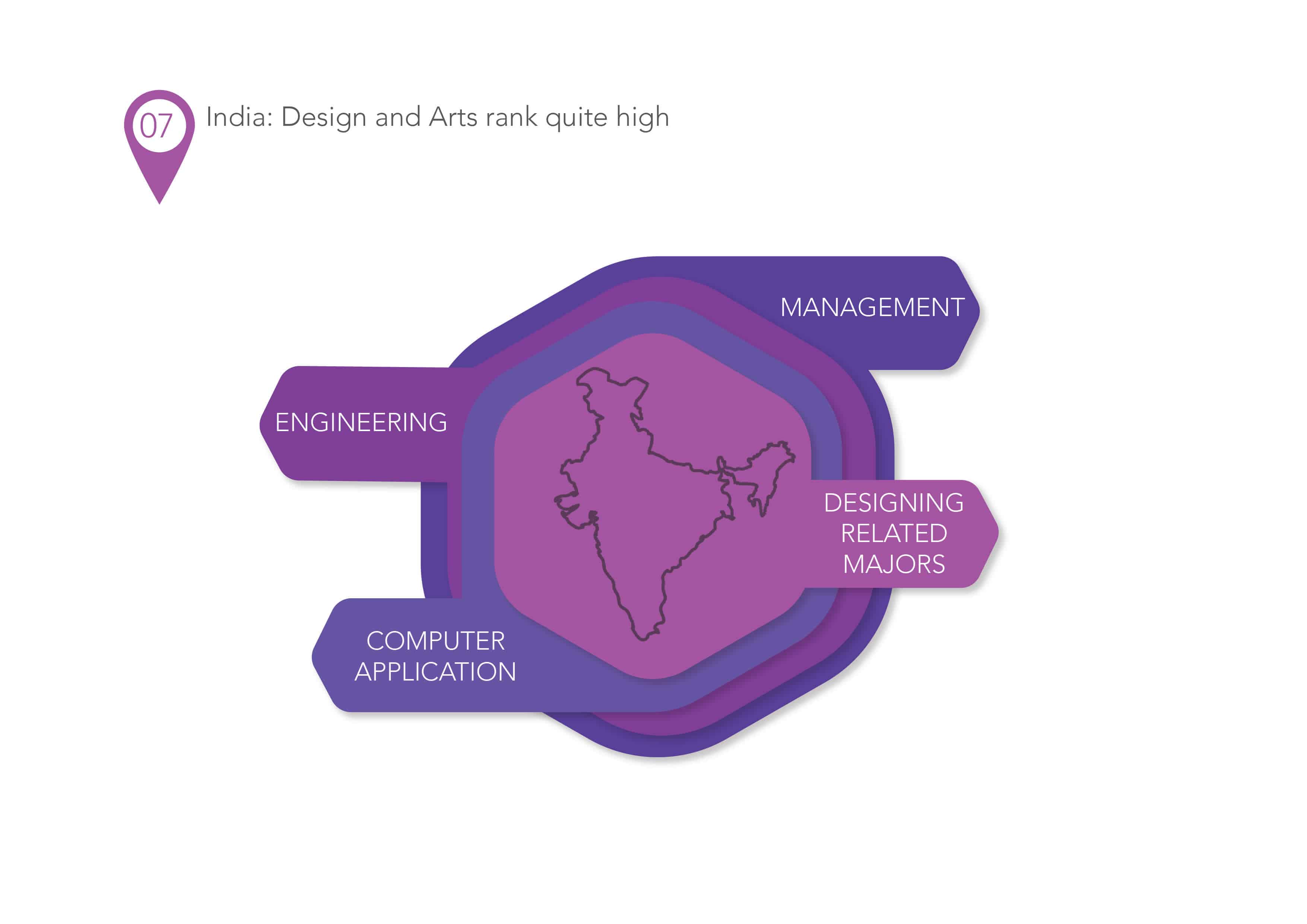
Nigeria: poor domestic university quality makes it one of the largest exporters of students, and engineering is their first choice
The World Education Services (WES) report presents an overview of the Nigerian higher education sector, which expanded quickly over a relatively short period and had no particular admissions standards until the 1970s.
Due to funding constraints, most of Nigeria’s public universities are in a deteriorating condition, and university quality is notoriously poor.
In 2017, only one of Nigeria’s universities was listed among the top 1,000 in the Times Higher Education Ranking, considerably lower than African neighbors such as South Africa, Ghana, and Uganda.
Thus, most of the best Nigerian students will choose to study abroad whenever they get the chance, making Nigeria the top African exporter of students and one of the largest in the world with rapidly growing outbound mobility numbers.
When studying abroad, Engineering (22.1%), Business (15.3%), Physical/Life Sciences (13.1%) and Health Professions (12.6%) have been constantly the most popular choices among Nigerian students.
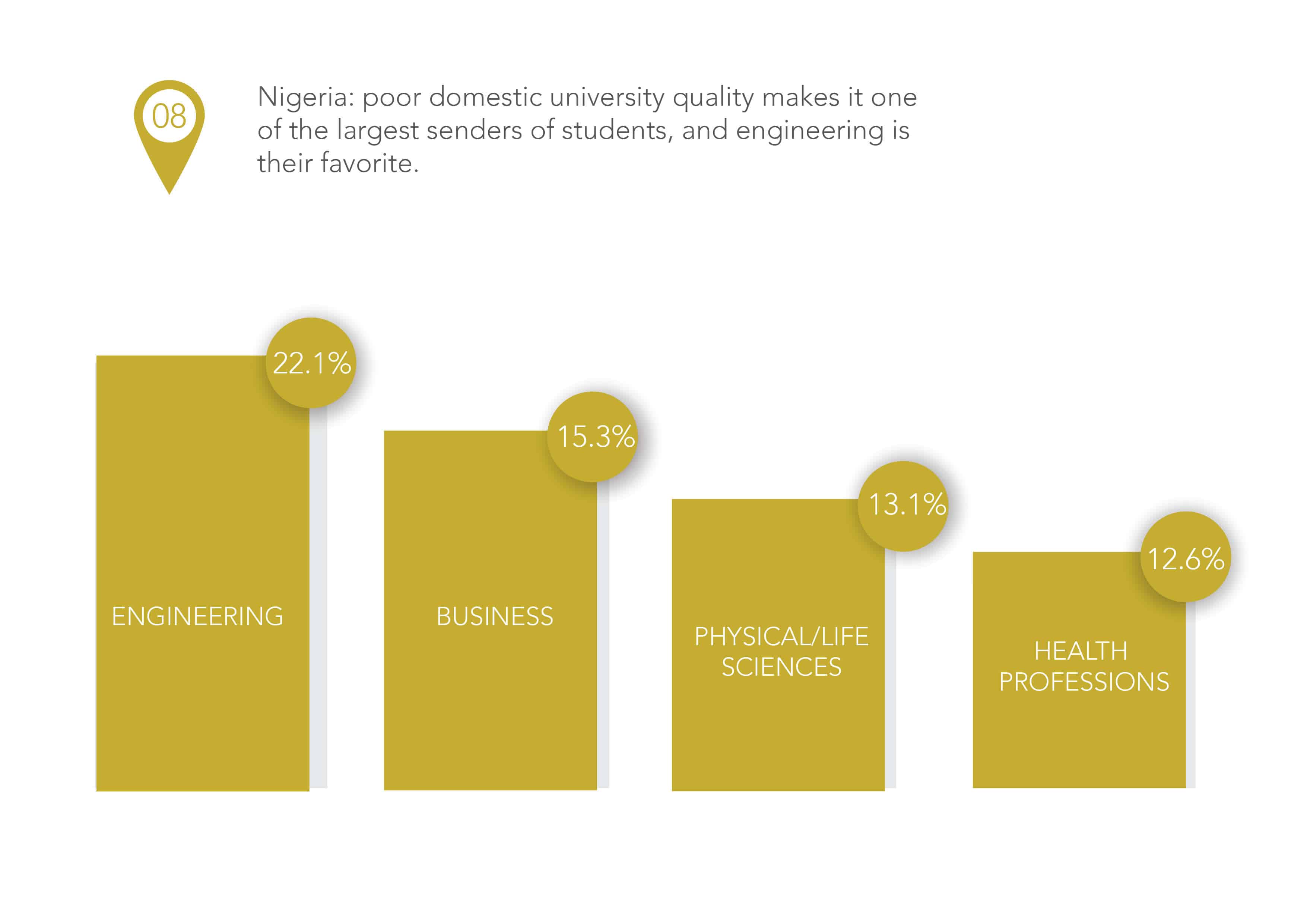
Brazil: Law is currently the most popular college degree
A survey conducted by Brazil’s Higher Education Census (Censo da Educação Superior) shows that the increase in enrollment in Law was 35% in 2017, overtaking Administration as the top-ranked major among over 2 million young Brazilian freshmen.
Experts say that this may be due to the growing debate on topics such as corruption and Lava Jaro in the media.
Administration, including Public Administration, Private Administration or Third Sector Administration ranks Top 2. Education, Civil Engineering, Accounting, Nursing, Psychology, Physical Education, Architecture and Urbanism and Production Engineering receive the 3rdto 10thplaces, indicating that Brazilian students pay more practical attention to employment trends.
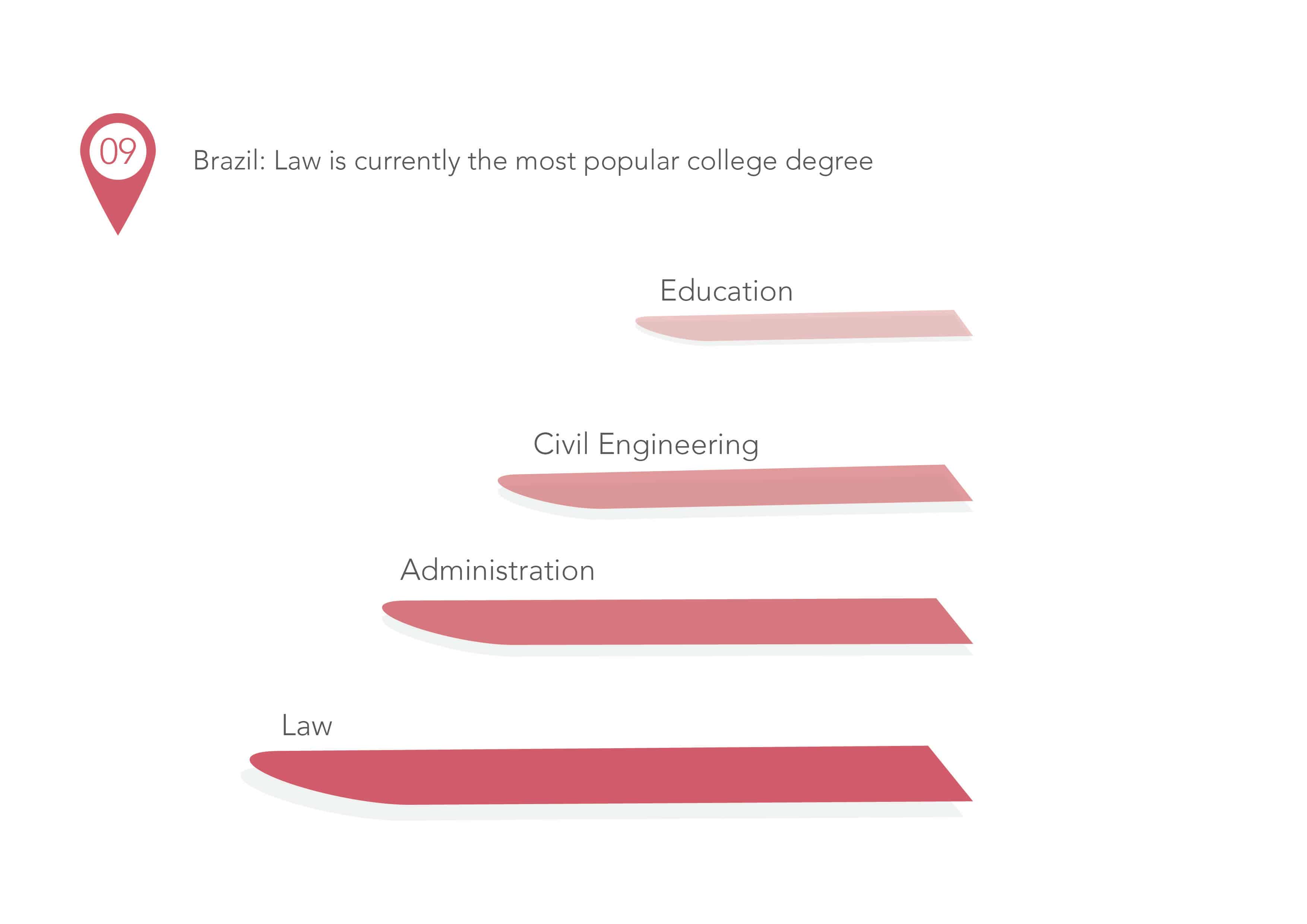
Mexico: Medicine is one of the most sought-after majors – and the most competitive – while the social sector is expanding
The Mexican Institute for Competitiveness (IMCO) has published a study that discloses that 50 percent of the professionals in Mexico hold degrees from only 10 disciplines, which tend to be the most popular majors in this developing country:
Administration and Business Management, Accounting, Law, Education, Engineering (including industrial, industrial, mechanical, electronic and technological), Medicine, Psychology, Computer Science, Information Technology and Nursing.
Medicine, Law and Administration are also the highest paid professions in Mexico.
But compared to the other two, places for students to study medicine are highly constrained due to the extremely low rate of admission at Mexican medical schools.
For example, the only Mexican general public university, UNAM, received nearly 27 million applications for medicine in 2019 but admitted only 327 students, giving Medicine a low ranking in the roster of awarded degrees.
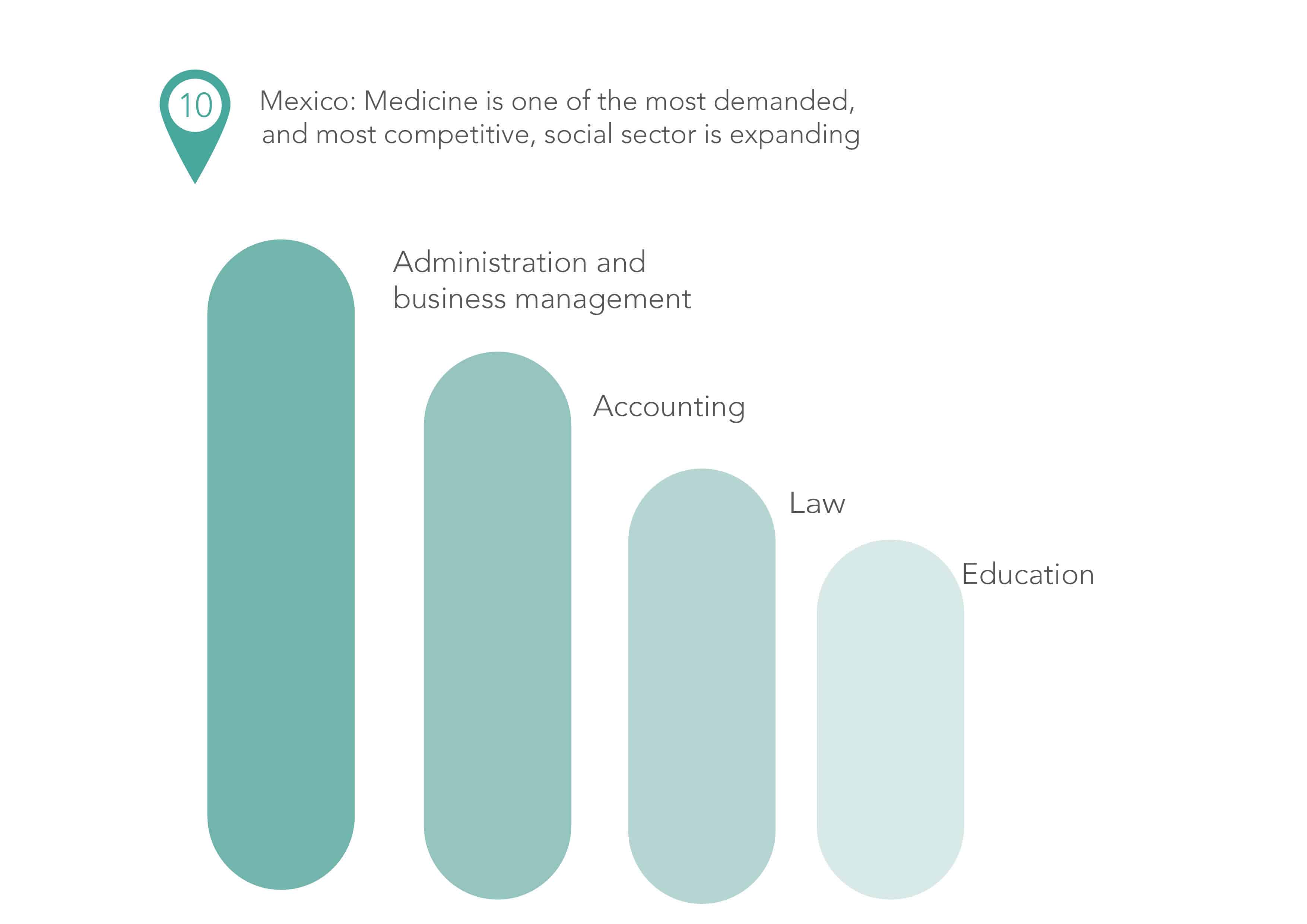
Read more here.
Former Senior Education Consultant’s Advice: How to Get into US Universities
Support us!
All your donations will be used to pay the magazine’s journalists and to support the ongoing costs of maintaining the site.
Share this post
Interested in co-operating with us?
We are open to co-operation from writers and businesses alike. You can reach us on our email at cooperations@youthtimemag.com/magazine@youthtimemag.com and we will get back to you as quick as we can.
